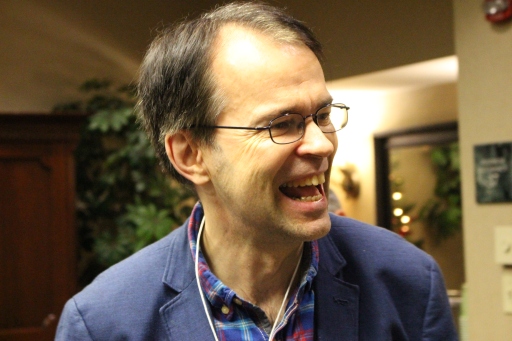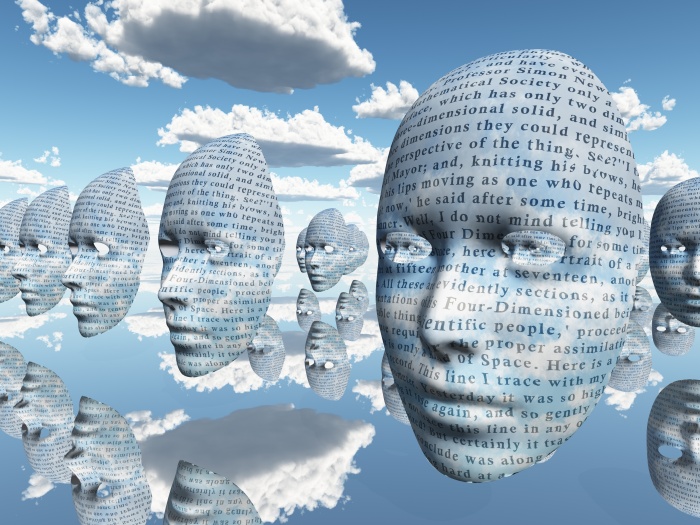 This post is an excerpt of “Living Within Reason” on the blog “Virtue Insight”, of the Jubilee Centre for Character and Virtue, available here.
This post is an excerpt of “Living Within Reason” on the blog “Virtue Insight”, of the Jubilee Centre for Character and Virtue, available here.
Cultivating virtue helps us to live well within reason. But how are we to understand the kind of guardrails reason provides? Why suppose that reason can govern action and emotion in the way that neo-Aristotelian theorists of virtue seem to suggest that it can?
After all, there is an impressive body of empirical research suggesting that people frequently fail to live up to their own ideals. Worse, there is a lot of evidence that resentments, strong and unwelcome desires, and emotional scarring from old psychological injuries—aspects of our inner lives that rarely occupy conscious attention—may have more influence on what we do in some areas of our lives than thinking about what to say or do. And spending a lot of time thinking out what to do can itself be a symptom of a failure of sound self-governance. One of the characters on a popular television series in the U.S. these days is a moral philosopher who is effectively paralyzed by treating all decisions—what sort of soup to order in a restaurant, for example, or what to name his dog—as situations requiring long and careful deliberation.
For all that, developing various habits of reflection is likely our best hope of living up to our own standards and leading lives that we find satisfying and meaningful. The very psychologists and philosophers whose work draws our attention to our tendencies to lose track of what we find most important when making concrete decisions at work or at home also provide some guidance on ways of counteracting these problems in practice.
TIBERIUS ON THE REFLECTIVE LIFE
In The Reflective Life: Living Wisely With Our Limits, Valerie Tiberius discusses the importance of developing a core and structured sense of the things that matter to us in life—family and friendship, for example, or health and an acceptable level of material security—that can provide some basic guidance in making major decisions. But Tiberius hopes to bring the study of major life choices down to earth in thinking about the more mundane business of daily life.

She argues that we need to work against tendencies to cynicism, to work toward realistic optimism, to be open to entertaining alternate perspectives on matters of conduct and policy, and to be mindful of our own tendencies to see ourselves in lights brighter and more favorable than will be strictly warranted. Humility and gratitude, she urges, are crucial to the kind of self-awareness we need if our own senses of what matters most to us are to shape our choices. Lively awareness of considerations of fairness can help to counteract our tendencies to acting on self-interested impulses (and to hide such tendencies from ourselves). Tiberius is not a Thomist and Aquinas did not have access to the empirical findings that inform Tiberius’s work on practical wisdom. Nevertheless, the thought that working to develop the habits associated with secondary virtues—cultivating fairness, humility, and gratitude, for instance, and thereby articulating and supporting cardinal virtues—alerts us to the ethically salient aspects of our circumstances and helps us to make wise decisions is in keeping with the spirit of Aquinas’s work on virtue. The job of virtue is to provide us with the frameworks that give us a good understanding of our situations and so guide our choices. Leading reflective lives gives reason the right role in self-governance, not through paralyzing, rigid, and frequently deluded insistence on planning every aspect of daily life—as though it was in our power to prevent the world from confronting us with situations that demand a different response—but by helping us to pause and reflect when that is what we need to do.
EXAMPLES
Suppose, for example, that like most people I find that I tend to make foolish decisions when things that I take to be in my self-interest look to be at odds with things that I ought to do for the sake of my family or for the sake of my job. It’s not as though I will lose my job if I put my interests ahead of what the larger organization looks to need from me. Nor am I likely to alienate my family members if I seek to gratify myself now and then. But I want to be a better person, so I have decided to try to curb my more unattractive selfish side. Self-critical self-awareness is enough to let me know that some change is in order. Suppose that I start small, by reminding myself to step back and think about others. I could work on kindness and generosity, for example, starting small.
I decide to begin my self-improvement regime by getting into the habit of greeting everyone at work each morning—both the people with whom I work closely and the people who make our workplace run smoothly whom I tend not to notice as much—administrative staff, people on the cleaning crew, people at the lunch counter, and so on. I make a point of greeting everyone. This takes almost no time, but it helps me to be aware of my fellow human beings. A habit this small can have a profound effect on my decision-making. Through morning after morning of quiet, cheerful well-wishing, the reality of my fellow human beings begins to be part of my basic sense of myself and my world. Concerns about fairness, willingness to compromise, and more generally some sense for others’ interests can begin to inform my daily conduct at work. I have different material for reflection when faced with the tug of the dear self from one decision to the next on the job. And there is some evidence that even this kind of change in the behavior of one relatively highly-placed person in a busy office can begin to have a positive effect on the larger culture of the workplace. My colleagues might wonder what I’m up to, initially, and think that I might have some nefarious scheme afoot. But if I am cheerful, quiet, and steady in my efforts, my innovation can even begin to help my colleagues cooperate more effectively and productively. Reflective self-awareness taught me that I needed to change something about how I was living. Beginning to make the change began to give me better materials for reflective decision-making at work.
Working to become a better member of my own family can be at once more necessary and more difficult. Members of my intimate circle often know me better than I know myself, and if I have been as disappointing to my nearest and dearest as most of us have been, those closest to me will likely have developed healthy defenses against being too optimistic about the likelihood that I will improve much. Here, reflection advises me to be open to understanding the ways large and small in which those closest to me may have suffered from my selfish impulses, may have felt invisible to me, and may have had to adjust to a long history of experiencing me at my worst. I need to be able to see and take seriously the effects that my self-involvement has had on my loved ones. They have at least as strong an interest in seeing me change as I do. But they may not share my optimism. At home, I need to learn to listen very carefully to what my loved ones say, to notice and express genuine encouragement and support for them in their efforts at pursuing what matters most to them, to ask in detail about what they are doing and pay attention to what they say, to do my best to track their moods, and more generally to make each of them more vivid in my own mind. Kindness, patience, fairness, gratitude, generosity, and humility all are involved in becoming a better partner or parent or sibling, and the department of justice that demands that I keep my commitments faithfully—if only to give my loved ones a chance to experience a more reliable and trustworthy version of myself than they may have known in the past—all will conspire to guide me in making better choices at home. Among other things, these habits will help me respond better spontaneously to the demands of my home life and identify situations in which I need to pause and think carefully with others to decide how to respond to the challenges that we face.
For those of us interested in thinking about the ways that virtuous activity allows reason to effectively guide us in leading better and more fulfilling lives, work on cultivating virtuous habits is just work on learning to live wisely.
Candace Vogler is Professor of Philosophy at the University of Chicago and a Principal Investigator on ‘Virtue, Happiness, and the Meaning of Life’, a project funded by the John Templeton Foundation. She is also the Chair in Virtue Theory, a joint appointment with the Jubilee Centre and the Royal Institute of Philosophy.
 This 2013 article by our scholar Kristján Kristjánsson has become the first in the British Journal of Educational Studies‘ history to exceed 10,000 downloads! Congratulations, Kristján!
This 2013 article by our scholar Kristján Kristjánsson has become the first in the British Journal of Educational Studies‘ history to exceed 10,000 downloads! Congratulations, Kristján!




 This post is an excerpt of “Living Within Reason” on the blog “Virtue Insight”, of the Jubilee Centre for Character and Virtue, available here.
This post is an excerpt of “Living Within Reason” on the blog “Virtue Insight”, of the Jubilee Centre for Character and Virtue, available here.